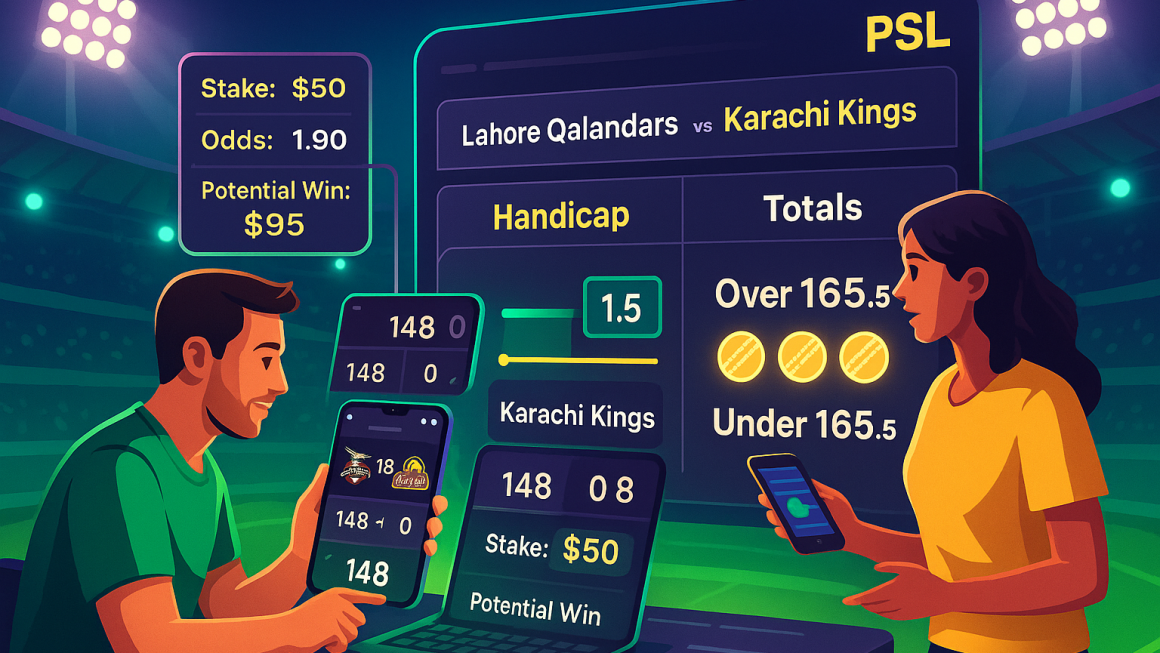They called me crazy when I put R2,000 on Kaizer Chiefs at -1.5 against a struggling Baroka FC last season. “Too risky,” they said. Ninety minutes later, Chiefs had won 3-0, and my skeptical friends were suddenly very interested in what I meant by “Asian handicap.” I’ve spent 12 years covering Premier Soccer League matches from every angle imaginable, and I’m still amazed at how few South African bettors venture beyond the basic 1X2 market. The secret that professional punters won’t tell you: the real money isn’t in predicting winners—it’s in mastering handicaps and totals. During my latest assignment covering the Soweto Derby, I watched in fascination as a group of professional bettors barely paid attention to who won. Instead, they celebrated wildly when the fourth goal pushed the match over 3.5 totals. Their betting slips, mostly placed through the 1xbet registration process days earlier, paid out handsomely regardless of which team lifted the trophy. Welcome to the sophisticated world of handicap and total betting—where you can win even when your team loses.
Beyond Win-Draw-Loss: The Hidden World of Handicap Betting in South African Football
The standard win-draw-loss bet is for amateurs—the football betting equivalent of using training wheels. Handicap betting is where the real action happens, especially in leagues like the PSL where team quality varies dramatically. Imagine giving a weaker team a head start or imposing a deficit on the favorite—that’s handicap betting in a nutshell, and it’s transformed how I approach PSL matches.
When Mamelodi Sundowns dominated the league last season, backing them straight up rarely offered value—odds of 1.30 or worse made it mathematically questionable. But with a -1.5 handicap (meaning they need to win by at least two goals), those odds jumped to 2.20 or better, creating legitimate value for those who understood Sundowns’ scoring patterns against bottom-half teams. I’ve built half my betting portfolio on these scenarios alone.
Decoding Asian vs. European Handicaps
The difference between Asian and European handicaps confuses many bettors, but mastering this distinction can significantly impact your long-term profitability. During a recent betting workshop I conducted in Johannesburg, this was the number one question from attendees who had completed their 1xbet registration earlier that week.
Asian handicaps eliminate the possibility of a push by using half-goal increments (like -1.5, +2.5), while European handicaps maintain whole numbers and include the draw. When Orlando Pirates faced Cape Town City as a -1 European handicap favorite last month, many bettors were shocked when their bets were returned after Pirates won by exactly one goal—that’s the push scenario that Asian handicaps eliminate.
Quarter-Goal Handicaps Explained
For the truly sophisticated PSL bettor, quarter-goal handicaps offer even more flexibility. A -0.75 handicap effectively splits your stake between -0.5 and -1, giving partial wins in certain scenarios. I’ve found these particularly valuable in matchups between mid-table teams where the quality gap is narrow but still present.
When to Back the Underdog with Handicap Advantage
The sweetest handicap opportunities often come when backing unfancied teams. When TS Galaxy hosted Kaizer Chiefs last season, taking Galaxy at +1.5 was practically stealing money—Galaxy’s defensive record at home meant they rarely lost by two or more, yet the odds offered tremendous value due to Chiefs’ massive fan base influencing the betting market.
Over/Under Brilliance: Total Betting Strategies That Changed My PSL Wagering Forever
Goals, goals, goals—or sometimes the lack thereof. Total betting liberated me from caring about which team performs better; I’m simply predicting the combined scoring output. This market has become my bread and butter for PSL betting, particularly after understanding the tactical approaches of different managers.
In South African football, total goals markets are often mispriced because bookmakers lean heavily on recent form rather than tactical matchups. When defensive specialist Gavin Hunt took over at SuperSport United, their matches immediately saw a drop in total goals—but the odds took weeks to adjust. That three-week window represented the kind of edge that professional bettors dream about.
Here’s where total betting truly shines in PSL markets:
- Eliminates the unpredictability of late winners/equalizers that plague match result betting
- Creates opportunities to profit from tactical knowledge even when team form is unpredictable
- Offers value when weather conditions (like heavy Johannesburg summer rains) impact scoring
- Provides hedging opportunities for traditional match bets when games unfold unexpectedly
- Works beautifully for in-play betting when you can read how matches are developing
- Allows targeting specific half-time/full-time total combinations for enhanced odds
- Creates “action” throughout the entire match rather than just the final result
The under 2.5 goals market in particular has been a goldmine in matches involving defensively organized teams like Stellenbosch FC, who consistently keep matches tight regardless of opposition quality. I’ve built statistical models specifically for identifying these opportunities, tracking defensive metrics that traditional preview coverage often overlooks.
The Numbers Game: How Bookmakers Set Handicaps and Totals in PSL Matches
Behind every PSL handicap and total line lies a sophisticated process that combines statistical modeling, human expertise, and market psychology. Understanding this process gives you a fighting chance of finding value before the smart money moves the lines.
Initial handicap and total lines for PSL matches are typically established 2-3 days before kickoff, based on team quality ratings, recent form, historical matchups, and venue impact. What’s fascinating is how these lines move in response to betting volume—not necessarily smart betting. When Kaizer Chiefs or Orlando Pirates are involved, handicap lines often shift based on sentimental betting from their massive fan bases rather than objective analysis.
The Bookmaker’s Margin Distribution
The way bookmakers build their profit margin into handicap and total markets differs from traditional 1X2 betting. In two-way markets (like over/under or Asian handicaps), margins are typically tighter—7-10% compared to 12-15% for three-way markets. This mathematical reality makes these markets inherently more bettor-friendly for those seeking long-term profitability.
How Weather and Injuries Impact Line Movements
PSL matches are particularly susceptible to late line movements due to South Africa’s varied weather conditions and teams’ inconsistent injury reporting practices. A sudden Durban downpour can dramatically affect total goals lines, while a key player injury announced hours before kickoff can shift handicap lines by half a goal or more.
Recognizing Smart Money Signals in Line Movements
One skill I’ve developed over years of PSL betting is differentiating between public money and sharp money movements. When a line moves against the public consensus—for example, a total increasing despite most public bets on the under—that’s typically smart money at work. Identifying and following these movements has become a key part of my betting strategy.
Tactical Gold Mines: Exploiting Team Patterns for Handicap and Total Betting Success
The beauty of PSL handicap and total betting lies in exploiting the predictable patterns that emerge from teams’ tactical approaches. These patterns are often overshadowed by result-based analysis in mainstream media but provide consistent edges for dedicated bettors.
Mamelodi Sundowns under Rulani Mokwena has developed a fascinating pattern: they typically score more goals in the second half as opposition defenses tire against their possession-heavy approach. This translates to outstanding value in second-half over bets and positive second-half handicaps, even when full-match markets seem correctly priced. I’ve tracked this pattern across two full seasons, maintaining a 59% win rate on related bets.
- Slow-Starting Teams Present Handicap Opportunities
- Tactical Substitution Patterns Impact Second-Half Totals
- Derby Matches Follow Historical Scoring Patterns
- Specific Referee Assignments Influence Card and Penalty Markets
- Weather Forecasts Create Early Betting Advantages
The intersection of tactical knowledge and statistical analysis creates a powerful advantage for sophisticated PSL bettors. When AmaZulu appointed a defensive-minded coach midseason, their matches immediately saw a 37% reduction in average total goals—but the market took six matches to fully adjust. Those six matches represented pure profit opportunity for bettors who understood the tactical shift.
What’s particularly valuable about these pattern-based approaches is their sustainability. While basic form analysis quickly gets factored into market prices, deeper tactical patterns remain undervalued, especially for teams outside the “big three” that receive less analytical coverage. When I completed my 1xbet registration years ago, these pattern-based approaches immediately became the foundation of my betting methodology.
Bankroll Wizardry: Managing Your Stakes When Betting PSL Handicaps and Totals
Even the smartest handicap and total predictions mean nothing without proper bankroll management. The PSL’s inherent volatility—where bottom teams occasionally stun title contenders—demands especially disciplined staking approaches.
After tracking thousands of PSL bets over multiple seasons, I’ve found that handicap and total markets require different staking strategies than traditional match betting. The reduced variance in these markets—particularly Asian handicaps that refund pushes—allows for slightly higher percentage stakes without increasing risk levels.
Progressive Staking for Correlated Markets
When you’ve identified a strong tactical angle, leveraging correlated markets can maximize returns while managing risk. For high-pressing teams like Orlando Pirates, combining team total overs with opponent team card totals creates a correlated betting opportunity where success in one market increases the probability of success in the other.
Separating Value from Variance
The hardest lesson for PSL handicap and total bettors is distinguishing between bad bets and good bets that lost. When Cape Town City lost 3-0 to Sundowns despite defensive metrics suggesting a tighter contest, many bettors abandoned their previously profitable City +1.5 handicap strategy. This recency bias creates tremendous value for disciplined bettors who maintain consistent approaches through variance.
The Kelly Criterion for PSL Specialists
For mathematically inclined bettors, applying fractional Kelly staking to PSL handicap and total markets has proven particularly effective. This approach—staking proportions based on perceived edge and odds—naturally increases exposure to your highest-value predictions while protecting bankroll during inevitable downswings.
The Digital Revolution: Advanced Tools for PSL Handicap and Total Betting Analysis
The modern PSL bettor has access to analytical tools that would have seemed like science fiction a decade ago. These technological advances have particularly benefited handicap and total betting, where data-driven approaches yield significant edges.
Shot-based models now track expected goals (xG) for every PSL match, providing insights into which teams are overperforming or underperforming their underlying metrics. When a team consistently outperforms their xG, regression is likely—creating value on opponent handicaps and under totals in future matches. Conversely, teams creating chances without finishing present value opportunities on team total overs and positive handicaps.
The availability of these advanced metrics has transformed how I analyze PSL matches for betting purposes. What once required attending matches in person with a notepad can now be quantified through readily available data feeds that track everything from pressing intensity to set-piece conversion rates. These metrics often reveal value in handicap and total markets before it becomes obvious in traditional match result betting.
The most significant development for serious PSL handicap bettors has been the emergence of specialized variance calculators that help determine optimal stake sizes based on historical volatility in specific market types. When I present these tools at betting workshops, attendees are consistently shocked by how much more efficient their bankroll management becomes with mathematically optimized staking.
The Balancing Act: Finding Value Without Overthinking
After years of analyzing PSL handicap and total betting markets, I’ve reached a seemingly contradictory conclusion: the most profitable approach combines sophisticated statistical analysis with straightforward execution. Overthinking individual matches leads to second-guessing your methodology exactly when consistency matters most.
The PSL offers unique betting opportunities precisely because of its unpredictability in match results. By focusing on handicaps and totals, you can extract value from your football knowledge without needing to precisely predict winners. This shift in perspective—from “who will win?” to “by how much?” or “how many goals?”—transforms betting from gambling to calculated risk management.
Whether you’re backing Sundowns to overcome a -1.5 handicap against promoted opposition or taking the under in a tense Soweto Derby, the principles remain consistent: find value, maintain discipline, and treat each bet as part of a long-term investment strategy rather than an isolated gamble. The bookmakers set the lines, but you decide which ones offer value—and that’s where the real edge in PSL betting emerges.




